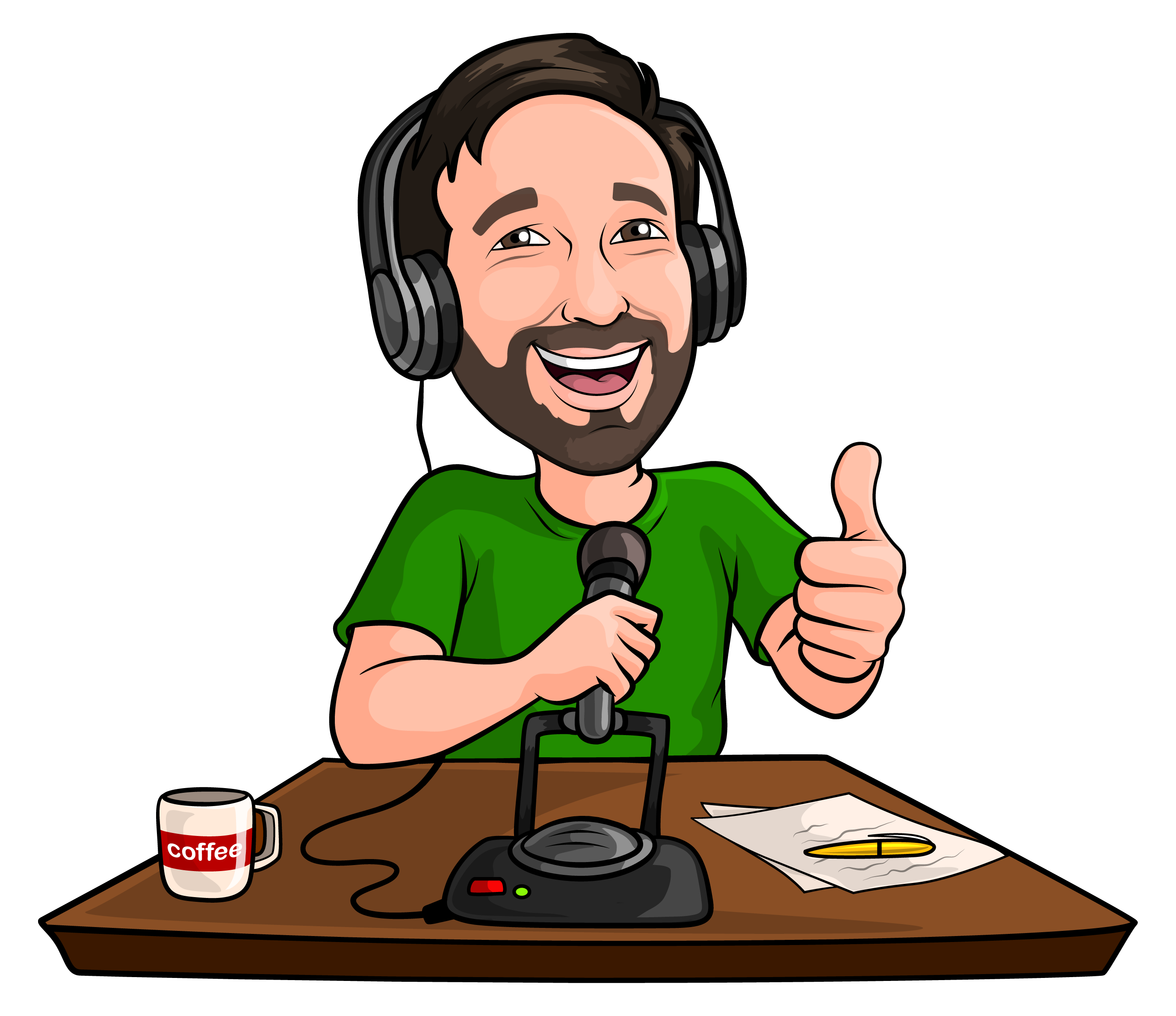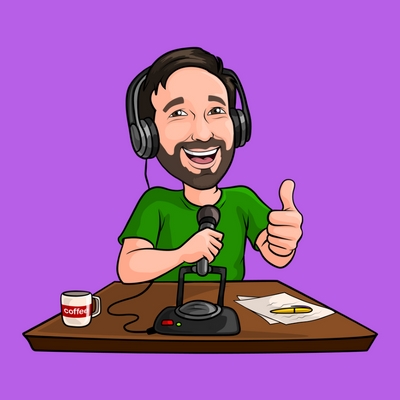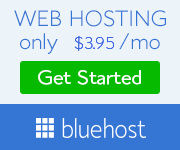Many people are turning to this very popular media to connect with people, and are asking the question, How Do I Start a Podcast? A podcast is in effect, a downloadable radio show, and trust me; they are engaging audiences in a new and unprecedented manner. Podcasts are listening on the go, audio stories that are captivating millions across the globe. Would seem silly not to be a part of this revolution.
Like anything you do, you will go on a steep learning curve to learn how to start a podcast, but it is not that difficult once you get the hang of it.
I have provided a walk through the process here, which should get you up and ‘on the air,’ quite quickly. Just take your time, however, and plan what will be a very successful, and profitable career as a podcaster.
- A podcaster solves problems
- Who is your podcast audience?
- Why should they listen to your podcast
- What should you call your Podcast?
- Planning Your Podcast Episodes
- How long should each podcast episode last?
- How often should you publish a new podcast?
- Name your Podcast and your episodes
- Write a Script for your Podcasts
- Where to record your podcast episodes?
- Let’s See What you have achieved so far as a Podcaster without spending a cent
- Cover Art for your Podcast
- Music for your Podcast
- The Best Podcasting Equipment for your budget.
- Voila; How Do I Start a Podcast? You just did. Well done you.
A podcaster solves problems
The most important thing you need to do is to SOLVE PROBLEMS for people. These don’t have to be deep and meaningful personal issue problems, but they can be should that be your field of expertise. Some problems are a lot easier to solve, like what destinations to visit and what you can and see and do there. Other areas may be how to exercise to get ready for the ski season, and others may be about gardening, hairstyles, politics, or just because you want to make people laugh. This is a problem, where people are being given an answer to their woes.
Regardless, your field of expertise needs to be something that you are 100% PASSIONATE about and can sustain a ‘series’ (think the TV show Friends) of podcasts and keep an engaged and growing audience, and a lucrative business if you work hard. You have heard all of the advertisensts on radio, haven’t you? Well, think podcasts and the millions of listebers that are tuning in.
Who is your podcast audience?
Think about the type of people who you want to listen to your podcast. It is unrealistic to think that everyone will want to listen to you, so be a little selective in what you will podcast about.
If I were podcasting about skiing, then they would be my target audience. If I were writing about quilting, then I would be writing my show to appeal to those nimble-fingered persons who, well, quilt. But I am not nimble-fingered.
When you know the audience who you want to target then you need to help them to find your podcast, and a lot of this comes from compelling and entertaining content, that yes, solves a problem. Staying with the ski analogy, I would want to know what exercises I should be doing before the ski season starts, for example, so I don’t die a thousand deaths on Day 3.
Why should they listen to your podcast
People will listen to your podcast because you know what you are talking and that is the correct answer. They will listen because you are a speaker, who engages your audience. You need to give your audience a REASON TO LISTEN, AND A REASON TO RETURN.
My imaginary ski podcaster may have told me how to strengthen my thighs, and then will invite me back next week to find out how to stretch correctly ..and I would return because stretching is important, and I hear it from a podcaster who KNOWS WHAT THEY ARE TALKING ABOUT. In other words, they are adding VALUE to my life, and the other people who also love to ski and to listen to someone who knows what they are talking about.
What should you call your Podcast?
I am a very big believer in keep it simple when you name your podcast, yet memorable. People need to be able to find you, yet you need to stand out from the crowd also ..and podcasting is becoming a crowded marketplace.
We will stay with my ski podcast analogy. I want to be able to know that the podcast is talking about skiing for a start, and if the podcaster is smart, and drills down a bit, he or she will concentrate on ski/snowboarding health for example, and call it something that simple. Or they could even go something like Black Run Fitness because snow bunnies will understand that.
Planning Your Podcast Episodes
So you have pinched my ski health podcast idea, and now you need to sequentially plan how you are going to deliver the material and keep me and the thousands of other skiers and snowboarders coming back for more advice.
How long should each podcast episode last?
You need to decide this in advance and, where possible. Keep to the same timing for all podcast episodes you produce. Consistency is the key. The research says that anywhere between 20 to 45 minutes is sufficient, with 45 minutes the absolute maximum.
20 MINUTES is a good rule of thumb, as it is long enough to engage your audience, and not too long that you will be boring the life out of them. Keep them coming back for more.
How often should you publish a new podcast?
People live by timetables. Their favorite TV show is on a Sunday night at 6 pm, and they remember this. Whatever you decide, be consistent and don’t make a rod for your own back by being too ambitious.
A very good rule of thumb is a WEEKLY podcast. So I know that I can expect my ski fitness podcast weekly, and I am good with that. I like routine as do other podcast listeners. Make it fortnightly or monthly, and yes I will move on because I will have forgotten and worse still – couldn’t be bothered.
Name your Podcast and your episodes
You need to tell people what is the Name of your Podcast. You need to write a brief description of your podcast – nothing too fancy, but summarizes what you will be discussing. It helps if you download the free app, Podcasts from the iTunes store, and get a feel for what other people are doing.
You will also need to NAME EACH EPISODE. Example, I might name my podcast Ski Fit, and my episodes, ‘How to get your Thighs in Shape for Skiing,’ which works as a title because I know what you will be discussing. The 2nd episode could be ‘Stretching for Beginner Skiers’ – again; these terms are descriptive and better still, they are SEARCHABLE. iTunes allows searching by episode name.
Write a Script for your Podcasts
You really should write a script for the first 4 (at a minimum) episodes, so that you can consistently go from topic to topic and make reference to future and past podcasts. This will help you to coherently know what sequence you want to discuss matters, and to solve problems.
We don’t want you reading what you have written per se, but when it comes time to press record, you will want some notes that are handy to refer to. It takes time to relax and become conversational with your audience, so having notes is necessary for scope and sequence, and for calming your nerves.
Remember you are starting your podcasts to be a successful person in this arena, and you need to PLAN, PLAN, PLAN.
Where to record your podcast episodes?
The reality is that many people do not have access to a fabulous recording studio, so you will need to be creative in your own home.
Choosing a Podcast Recording Location.
– Choose a spot that is quiet and free from distraction.
– Don’t record when there is peak hour traffic roaring past your house, or when the birds are waking up in the morning
– Many people record inside their wardrobes because the clothes dampen the sound. True story.
– Turn off fans, A/C, and anything that generates noise.
– turn off your mobile phone, or at least set it to quiet, and take your phone off the hook.
– avoid wooden floors
– send neighbors, kids, and pets away for a while if you can.
– microphones need to be “dynamic” not “condenser” mics (which pick up the sound of a leaf dropping miles away). I will explain later.
Let’s See What you have achieved so far as a Podcaster without spending a cent
- You have decided to become a podcaster. Well done you.
- You have selected a Name for your Podcast
- You have decided on the topics you will be talking about, AND you have SCRIPTED them
- You have given your episodes SEARCHABLE TITLE NAMES.
- You have READ IT TO YOUR DOG, and he/she thinks you are awesome.
- You have read it out loud, and recorded yourself and shuddered at how many pregnant pauses, and aarhs you say. Use a free app like iTalk for Mac users, and Notes: Supernote Recorder, Note, Photos Notes for Android users.
- Now, you need to spend some money on art, music and yes, the equipment. Sorry about that.
Cover Art for your Podcast
As you will have seen on iTunes, each podcast has unique art or a cover. Unless you are a skilled artist, you may want to pay someone to do something that represents your brand and your niche. Fiverr is a site where you can employ a graphic artist, and it will NOT cost you a fortune. But remember you need to select wisely. Some people are much more talented and representative of what you want than others. It wouldn’t hurt too, to buy the sole ownership of the graphic and ensure that the artist doesn’t onsell it to someone else.
Very important: Your cover art should be 1400 x 1400 pixels, in JPG or PNG form, and under 500kb in size. It should be easily readable when only around 200px wide.
Music for your Podcast
All good radio shows and podcasts will have their own signature tune, something that the audience associates distinctly with YOUR podcast. You could get some music for free, but it can also be used by other people. Hmmm. Some suggestions are Incompetech or Music Bakery.
If you are 100% committed to your new career as a podcaster then why not make it professional from the start. If you want a professional introduction and conclusion to your podcast, as well as your own unique music, then Creative Audio
– Music Radio Creative can give you the full package. Just talk to them. It is probably a worthwhile investment.
Now it gets technical
The Best Podcasting Equipment for your budget.
You need some equipment to get your podcast out to your new listeners.
You will need:
– a microphone
– headphone(s)
– Recording and Editing software
– a Media host, so that your podcasts can be found.
– to get it onto iTunes
– some other podcast accessories if you are extremely serious
You COULD just use your computer with a built-in microphone and access to the internet, but it will not sound very good or professional, and listeners are fickle.
Microphone
You do need a good microphone … at the very least.
Let’s start with choosing the correct microphone. There are two main choices here: you have dynamic mics and condenser mics.
Condenser mics are more sensitive and pick up a wider range of sounds. While this definitely sounds like an advantage, it can negatively affect the quality of a podcast, if the recording does not take place in a soundproof room. Remember the leaf dropping in your neighbor’s yard?
That is why dynamic mics are more suitable for smaller scale productions, like you. The industry standard would be a microphone similar to the Shure SM58-LC Vocal Microphone, Cardioid. These microphones have the best quality/price ratio, and they cost around $100. This mic can serve as a benchmark and is one I think you will appreciate.
If you have a tighter budget, you can find other mics from the same company, including Shure SM48S-LC – Microphone with on/off switch, which comes at half the price, or you could go with the Audio-Technica ATR2100-USB Cardioid Dynamic USB/XLR Microphone.
If you are on a really tight budget, you can buy the Behringer Ultravoice Xm1800s Dynamic Microphone 3-Pack, which comes with three mics and is handy if you are interviewing guests, and you can check the latest price here.
If you are looking for a top-shelf mic, you have the Heil PR-40 Dynamic Studio Recording Microphone, which is one of the best rated in the world, and quite sexy for a mic, and you can read a review about it here.
Alternatives include the EV RE320 Variable-D Dynamic Vocal – latest prices here, and read a review here and the Shure SM7B Vocal Dynamic Microphone, which is a favored microphone for podcasters.
The ATR2100 is highly rated on Amazon. It is also equipped with both XLR and USB outputs so that it can be connected to either a mixer or a PC.
There is no wrong choice, just a difference in quality.
Headphones are an essential podcast equipment
The next part of the setup are the headphones. Headphones are important because they allow you to hear yourself when you speak into the microphone, and this will let you know whether you are too far away from the mic, too loud, too quiet, whether the dog id barking, etc. etc. You will also be able to hear all of the extra sounds picked up by the mic, sounds such as bumps on the desk, or cars driving by outside, and adjust accordingly.
They need to be:
– comfortable
– have no sound leak
– be portable
Some of the highly recommended headphones and their current cost, are listed below:
Sennheiser HD280PRO Headphone (new model) approx. $100
Shure SRH440 Professional Studio Headphones (Black) approx. $90
Sony MDR7506 Professional Large Diaphragm Headphones
Audio-Technica ATH-M30x Professional Studio Monitor Headphones – approx. $70
AKG K 240 Semi-Open Studio Headphones approx. $60
Recording and Editing Software
You must have software to record and edit the audio. You have no choice; your podcast recording will have to be registered, eventually to MP3. MP3 is a means of compressing a sound sequence into a very small file, to enable digital storage and transmission.
This won’t cost you, as there is a popular free program called Audacity which will be suitable for most of your podcasting needs.
However, if you are super serious and want to make the correct impression from the word go, then here are some recommendations for more advanced, and professional
Recording and Editing Software.
It is best to go with an external recorder such as:
Zoom H4n, Roland R-05,
or even Tascam DR-05 (if you are on a tighter budget).
An external recorder will streamline your workload. It will allow you to record straight to MP3, mix inputs, connect directly with XLR mics, apply gating, limiting, and compression, and it will also allow you to hear what you’re recording through the headphones. Yeh, I know, I told you it would get technical.
For the more advanced, they can also offer some extra functionality, such as four-channel recording, XLR inputs without a mixer, audio level monitoring, and pause and resume options.
Furthermore, since they do not require a computer to be used, they are very portable, which means you can record while you travel, conduct interviews in locations outside your studio, etc.
But how do you publish your podcast?
You need a Media host – plain and simple.
Media hosts are services that will store your audio (podcast) and allow your listeners to listen, download, and subscribe to your podcast.
Unfortunately, you cannot go directly to iTunes, so you need an intermediary media podcast host, like the highly recommended and popular BluBrry.
These Media hosts are websites designed to do exactly that – host your media files – your podcasts.
When you create an account with a media host, they allow you to fill in the details of your podcast, like the name of your show, a description, the category that best suits it, and this is where you upload your cover art too.
When you want to publish each episode, they provide the facilities to give all of the information in the one place. You just create a new episode page, enter your episode title and the episode’s description, often called show notes, and once you’ve done this, you have a live podcast episode, and your media host will have created a generic web page for your show.
Feeling like a star? You sure should be.
So, How do I get my podcast on iTunes?
When you have signed up to one of the media hosts and created your show, you’ll also be given a unique web address called an RSS feed.
– You just copy this address/URL, open iTunes, and over on the right, select ‘Podcasts.’
-You click on ‘Submit a Podcast, ’ and you’ll be directed to a small form.
– iTunes will ask for your RSS feed, which you add, and
– You check that it is correct and then hit ‘submit.’
Once all of that’s done, your podcast will usually be approved and appear in iTunes within the next week.






